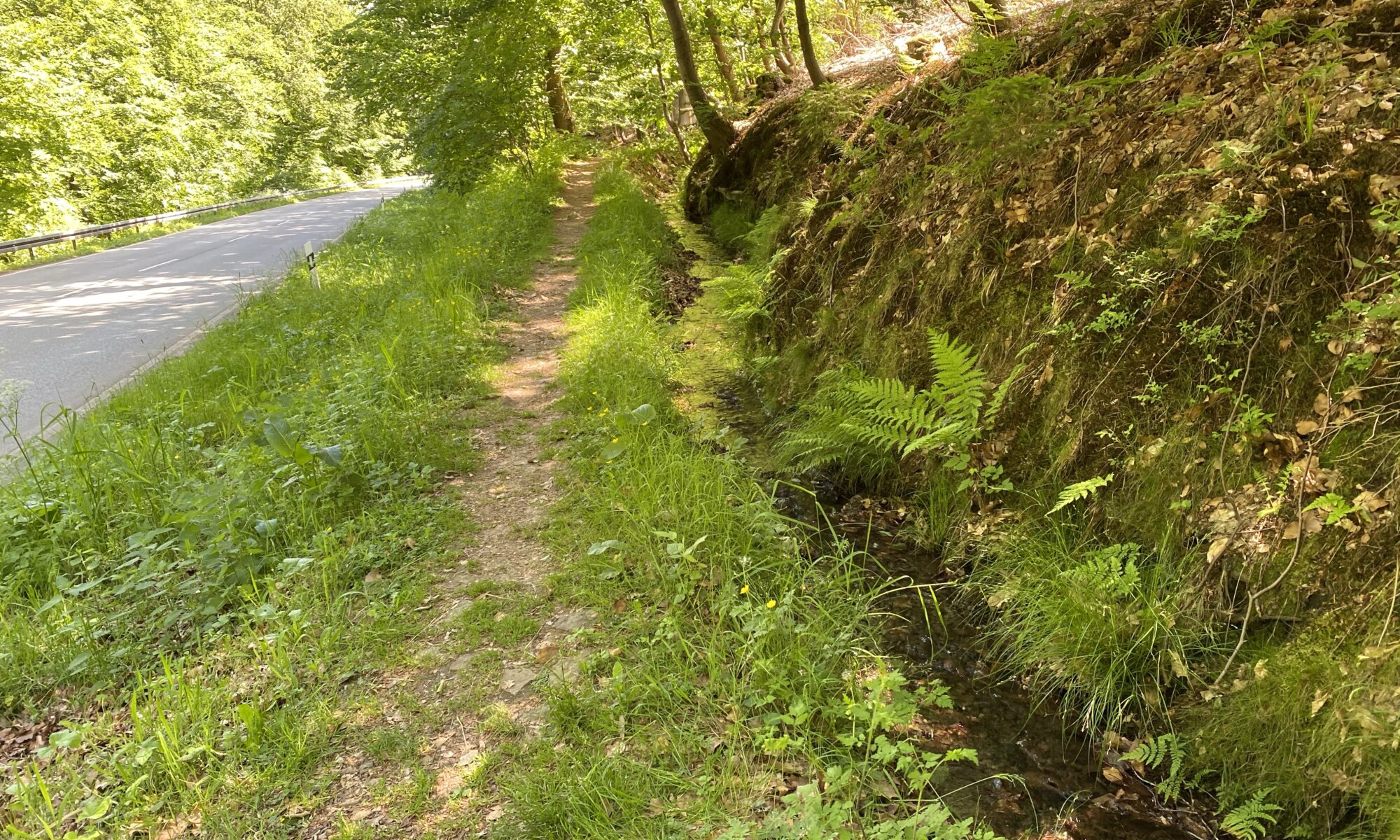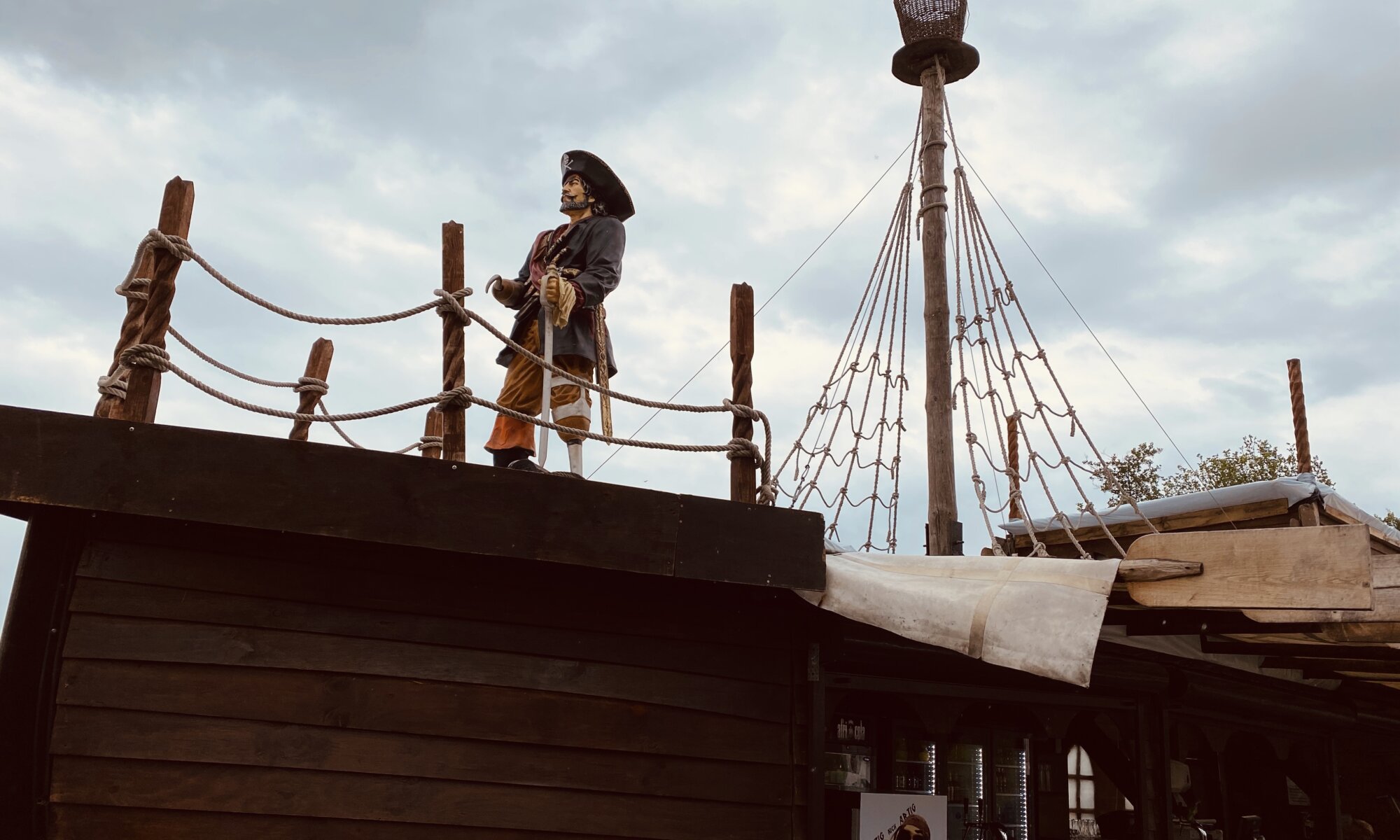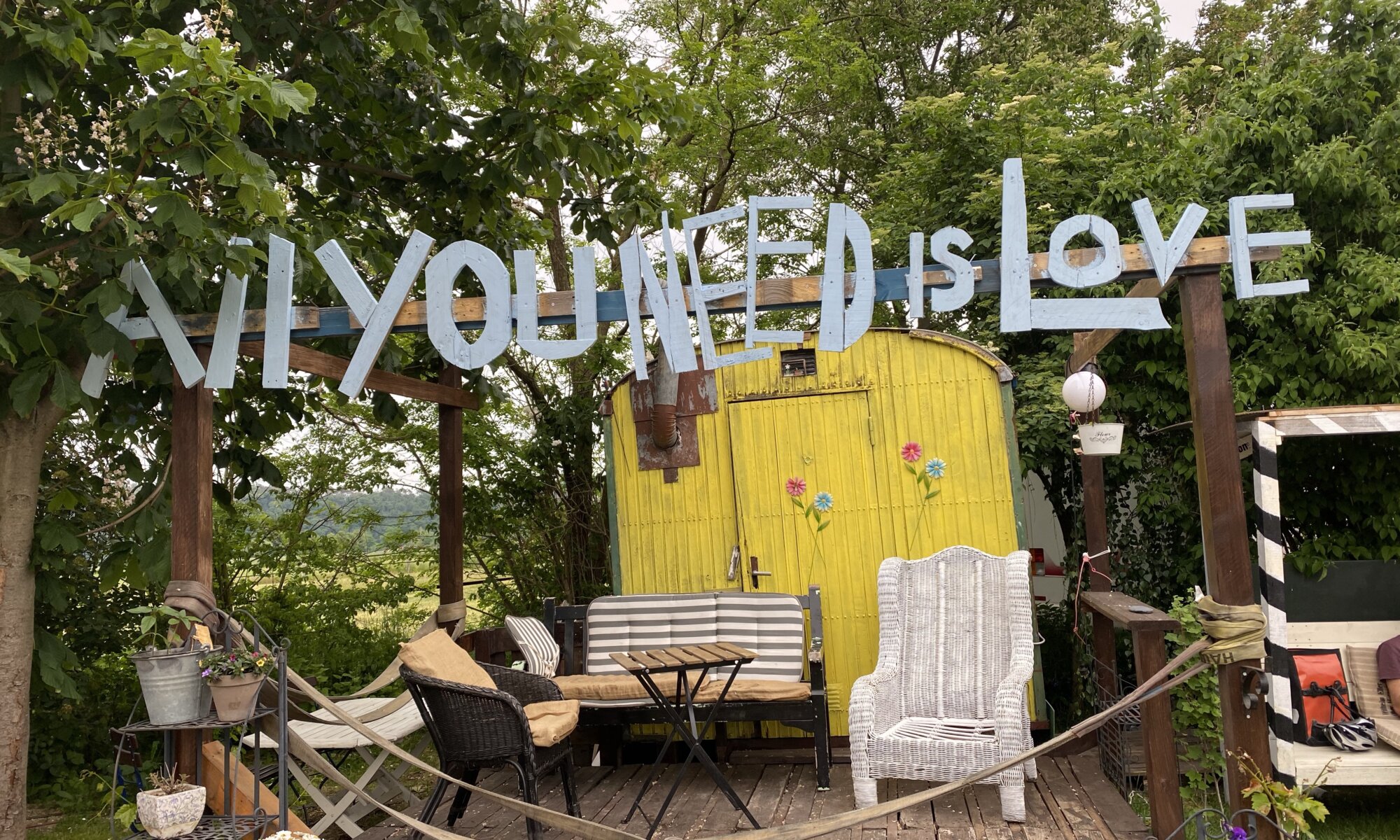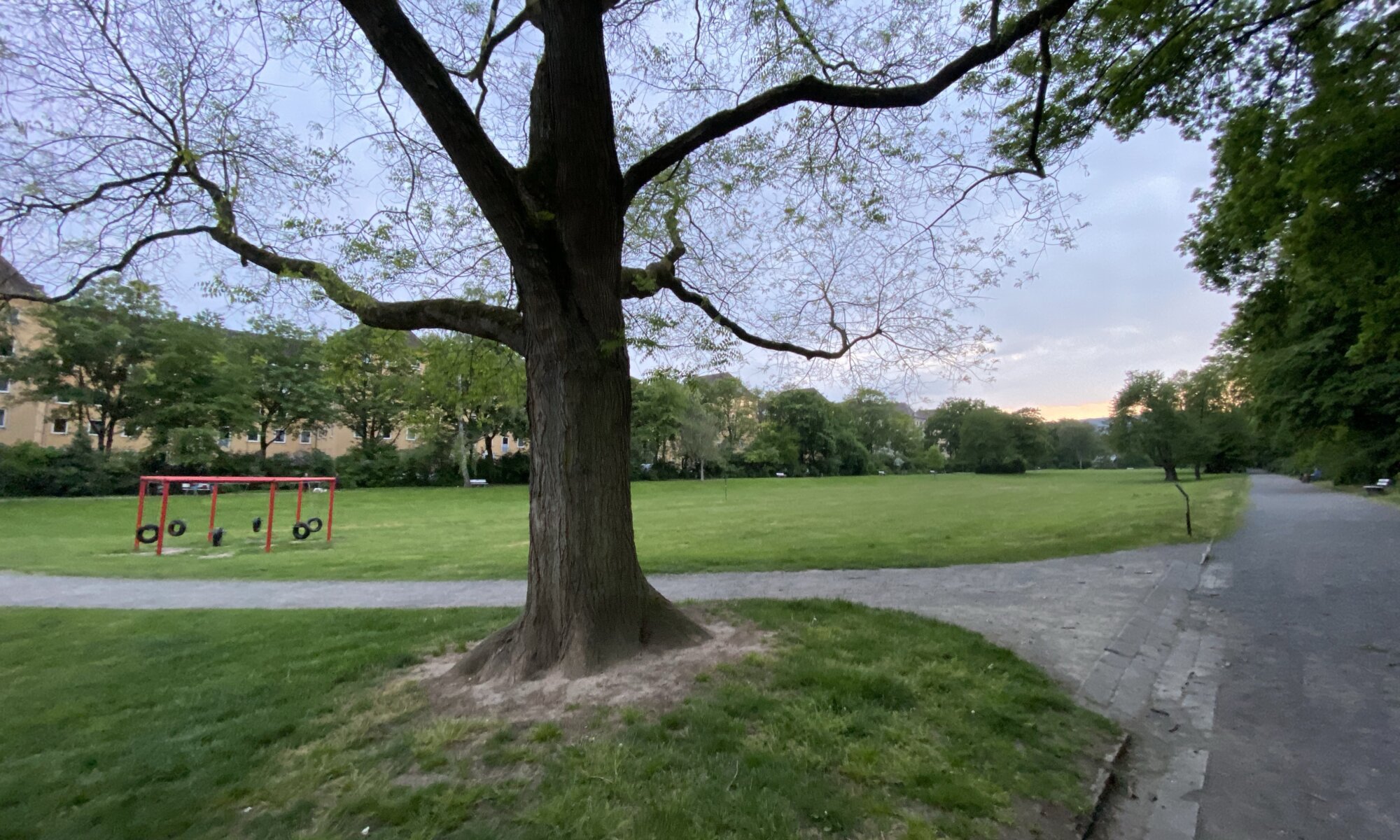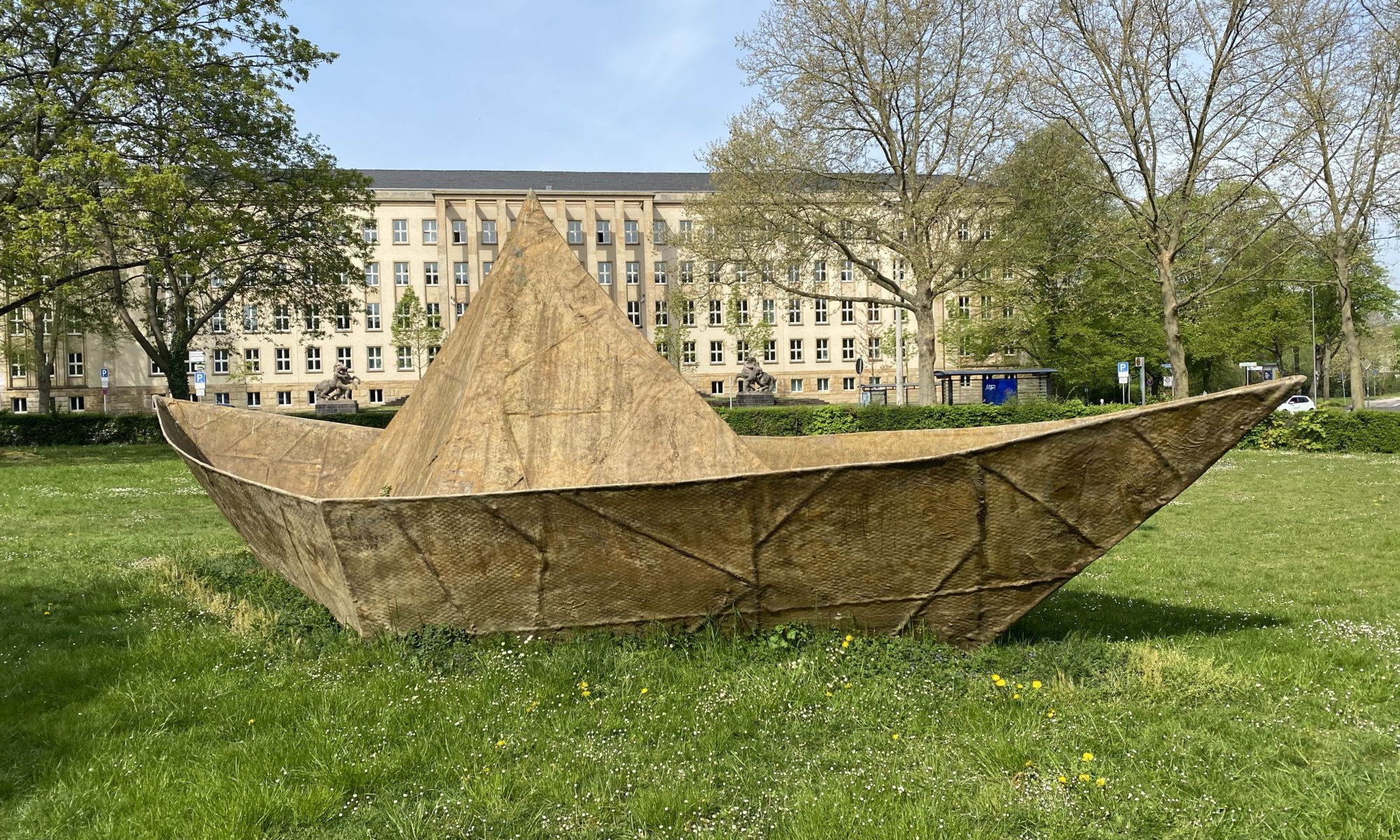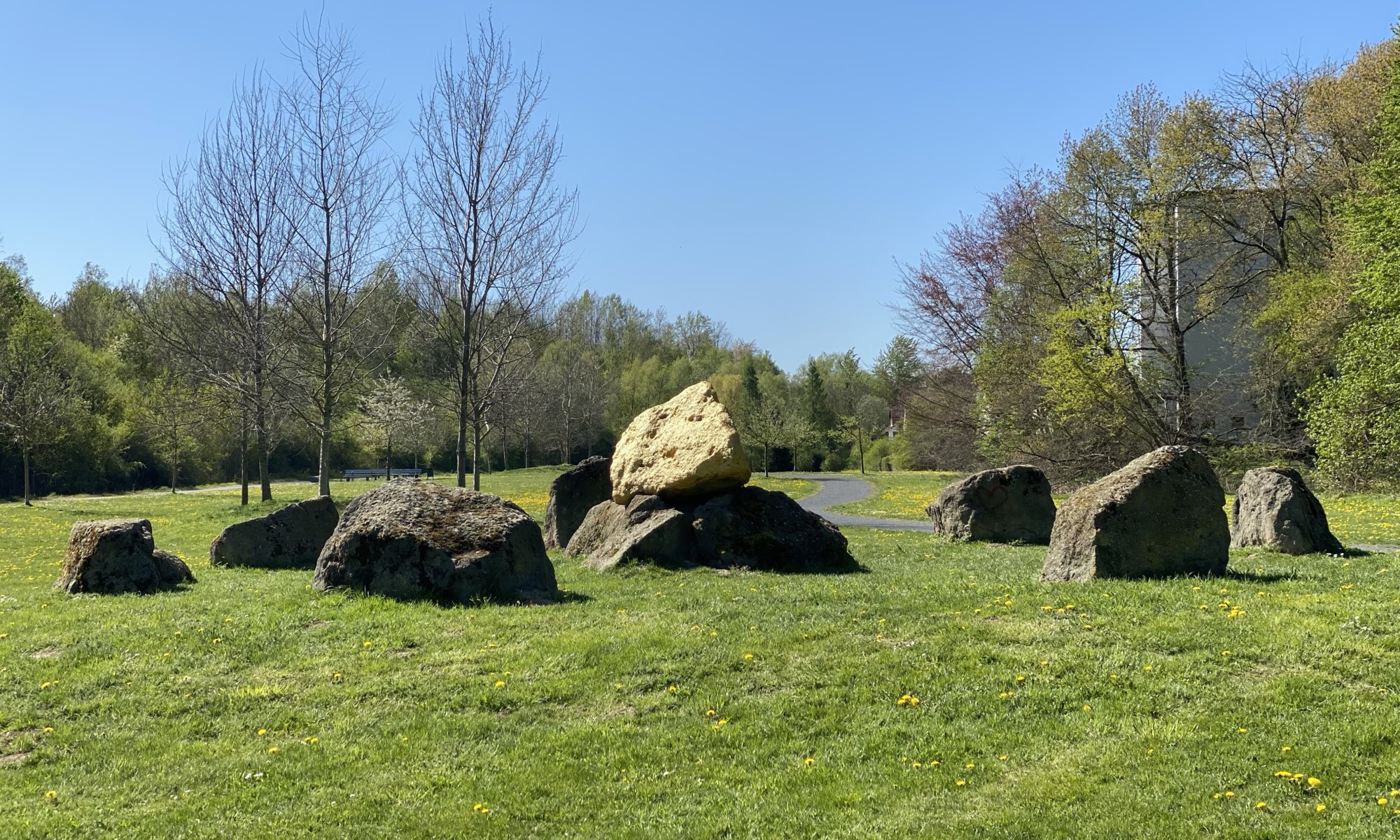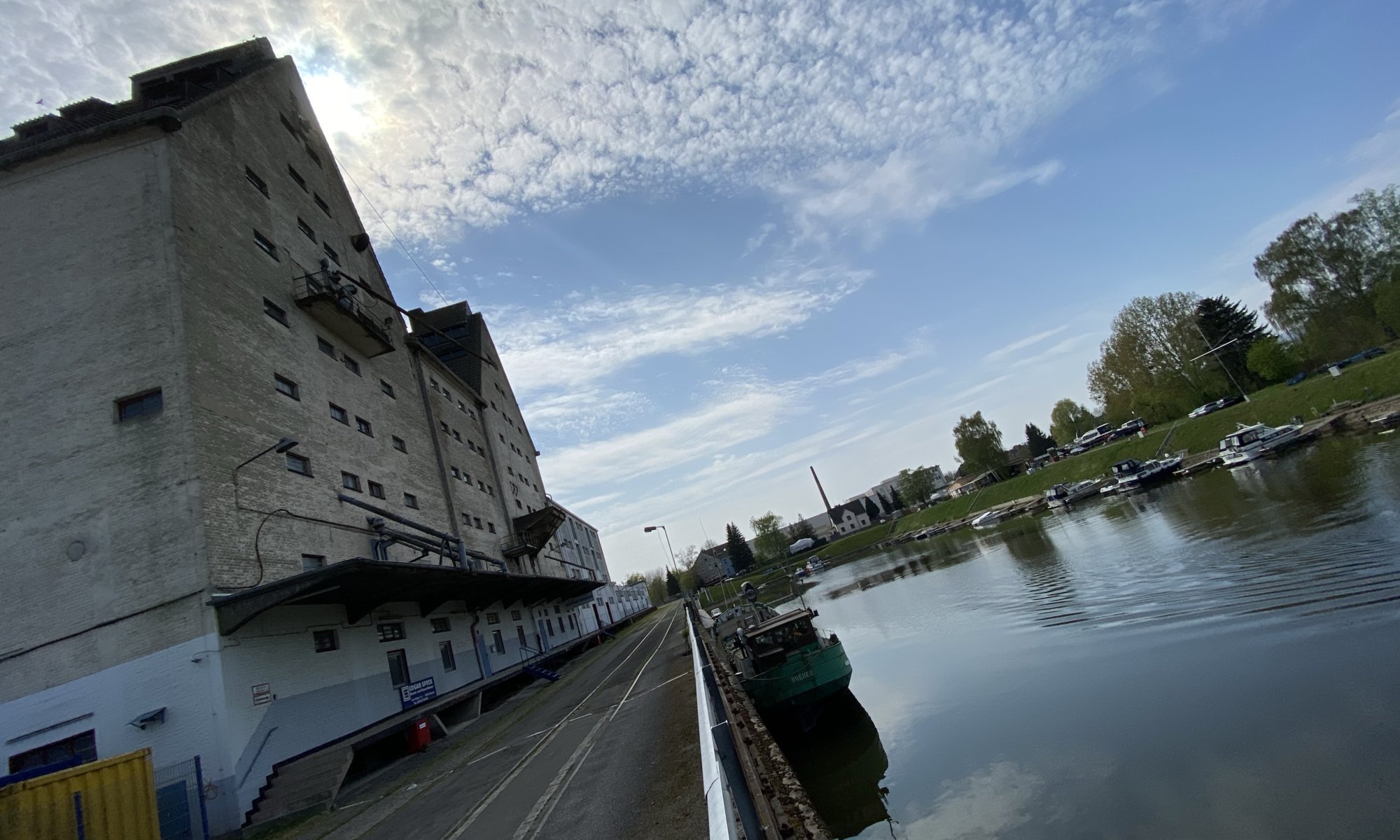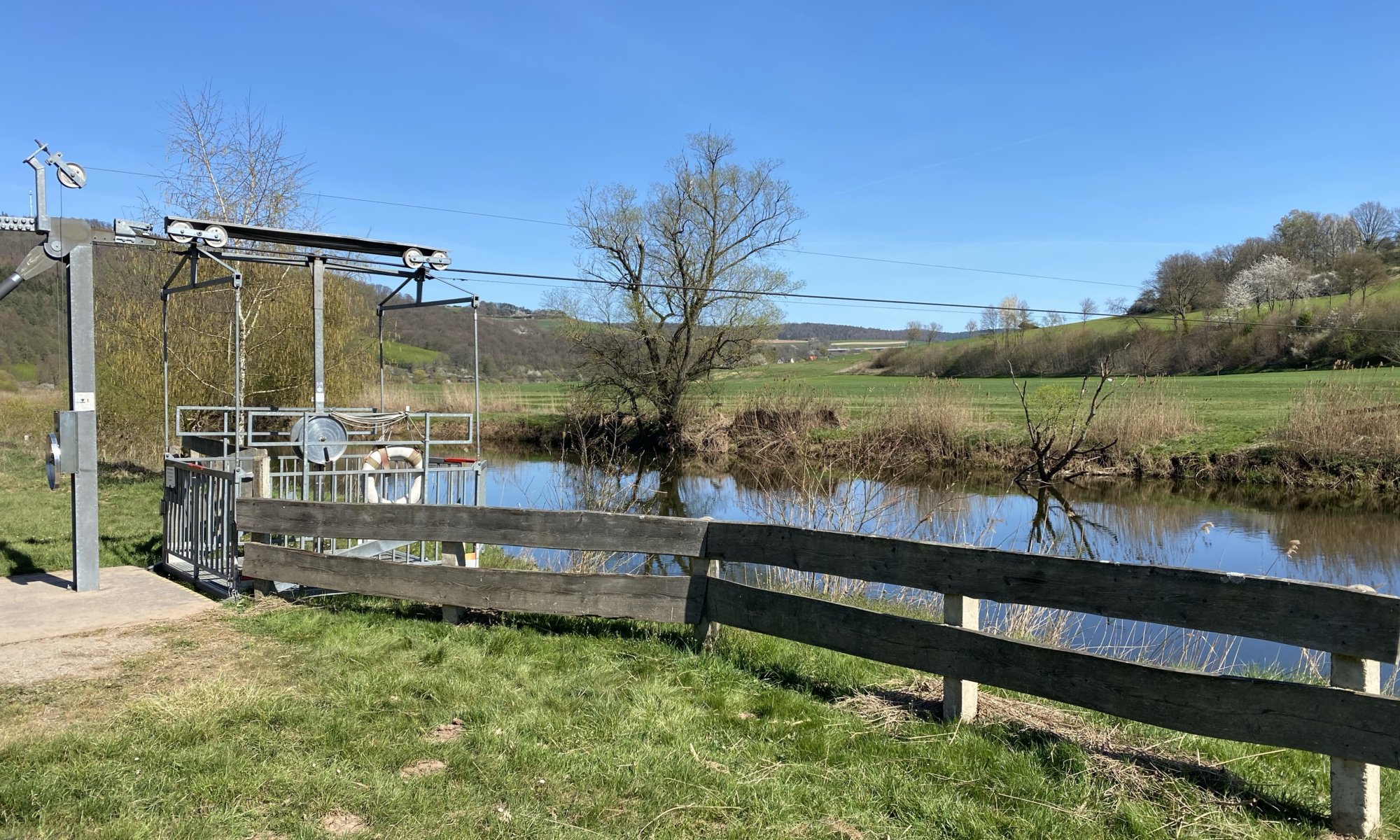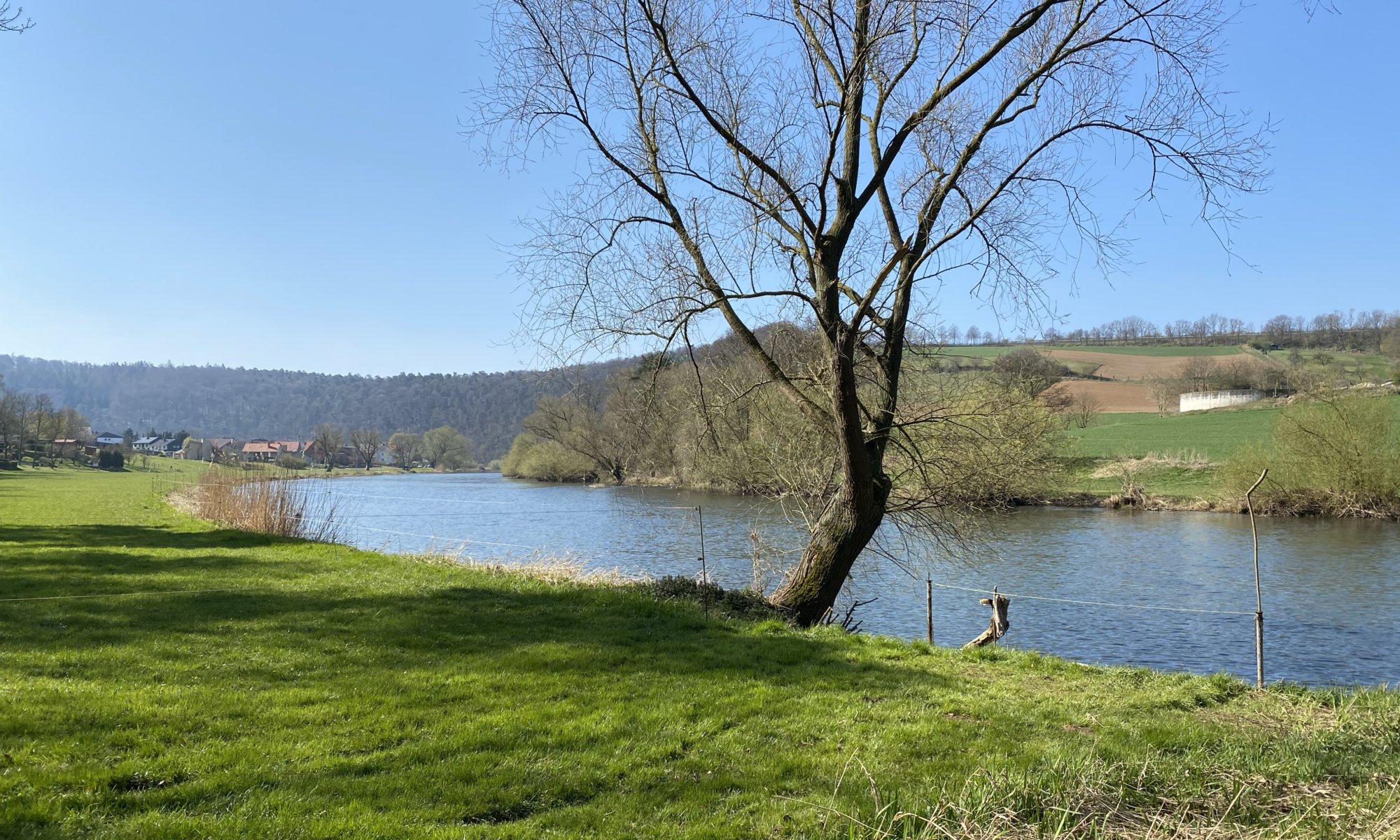Of course, water can only float down a hill due to gravity – but at Gieselwerder belonging to Wesertal, Germany, it looks like it is running up the hill. Close to the town you can find the Mühlenplatz where formerly a mill was located (today it is an open-air museum with miniature buildings). Above this place, there are water channels that brought the water to the mill in earlier days. Next to these channels a road can be found (the L763) which is pretty steep – it has an inclination of 10 % over 3 km (the pure horror, if you ride a bicycle). Because of that, the water seems to conquer gravity; a phenomenon called ‘Wasser bergauf‘ (water uphill).
Continue reading “Optical illusion”Schlachtschiff
When you’re cycling between Melsungen and Rotenburg an der Fulda, Germany, you might be surprised to see a large pirate ship next to a lake – the Heinebacher See. It is the Alheimer Schlachtschiff, a battleship that includes a bar and a restaurant. The Schlachtschiff is something between a beer garden and a restaurant, with prices close to those of a beer garden. The unique selling proposition is the location; it is the only restaurant between these two cities and beautifully located at a lake – including a small beach.
Continue reading “Schlachtschiff”O Captain! My Captain!
There are many good reasons to search for a nice beer garden: maybe you don’t have an own garden and just want to hang out, maybe you just want to have a beer in the sunshine. The beer garden named Käpt’n Tom at Fuldabrück, Germany offers an additional reason as it is located close to the river Fulda and the bicycle path R1 bringing you from Kassel to Melsungen or the Edersee lake. Everything there looks handmade and a little bit improvised but that makes up the cosy atmosphere.
Continue reading “O Captain! My Captain!”Goetheanlage
It is beloved and hated at the same time: the Goetheanlage in the city quarter Vorderer Westen of Kassel, Germany. A strictly geometric park where people meet to play, chat and to have a barbecue. It was opened in 1933 in the valley of the small river Drusel which still today ruins underneath in a drain. To create the park the place was filled with trash and soil. People living around were often annoyed by others having parties in the park – therefore since 2011 drinking alcohol is prohibited between 10 pm and 8 am.
Continue reading “Goetheanlage”Traumschiff
As children, we all created planes and ships by folding paper. Later in life, the ships were used to protect our hair while painting the ceiling. And maybe all of us have thought once in a while how it would be to travel within such a ship. The artist Anatol brought this idea onto another level: for the art exhibition documenta 6 in 1977, he built such a ship (from a stronger material than paper, of course) and travelled from Dangast, Germany, via the rivers Weser and Fulda to the exhibition opening in Kassel.
Continue reading “Traumschiff”Dorothea-Viehmann-Park
Maybe it is only a long-stretched park in the city quarter Oberzwehren of Kassel, Germany – but it is a nice place to relax and it has a special character. The Dorothea-Viehmann-Park is named after the woman living at Knallhütte (today mostly known for a local brewery) close to one of the major roads leading into Kassel. She retrieved fairytales from people of various countries and collected them – later she became the most important source for the Brothers Grimm.
Continue reading “Dorothea-Viehmann-Park”Kasseler Hafen
Most people might not even know that Kassel, Germany, has a harbour. It is not far away from the city centre but a little bit set aside. And since 1977 it is only used for yachting. If you get there you’ll immediately see that it had other purposes in the past – there are still large warehouses and train tracks that lead directly to the water. The harbour was opened in 1895 and used to transport goods from the North Sea via the rivers Weser und Fulda to Kassel. The opening ceremony included a group of ships travelling the Fulda up from Hann. Münden.
Continue reading “Kasseler Hafen”Fuldaseilbahn
When travelling by bike there are different options to cross a river like the Fulda. The most often used and most boring are obviously bridges. My most favourite one are ferries like the nice Weserfähre between Hemeln and Veckerhagen. But there is also a rather exotic one south of Melsungen, Germany: a manually operated funicular. It is connecting the two villages Beiseförth and Binsförth. Never heard of? Don’t worry.
Continue reading “Fuldaseilbahn”Upstream
If you managed the trip downstream from Kassel to Hann. Münden by bike you might be ready for the trip in the reverse direction: upstream to Melsungen. The way is a bit more hilly and sometimes you’ll have to ride on ordinary streets which are also used by cars. This route might be one of the good reasons to buy an e-bike (which everybody in Kassel except me seems to have done already). The trip is 37 kilometres long in each direction and you can do it in two to three hours depending on your speed and the number of breaks you take. You’ll end up in a nice old city with lots of half-timbered houses which is definitely worth the effort.
Continue reading “Upstream”Fullesteine
If you’re visiting Kassel, Germany or are travelling throughout the villages along the river Fulda you should look out for hand-painted stones: the Fullesteine. ‘Fulle‘ is the name of the river Fulda in the local dialect. A group of people takes stones, paints them and writes the name ‘Fullesteine‘ on the reverse side. They distribute them somewhere in the region and you’re invited to participate in the game.
Continue reading “Fullesteine”
